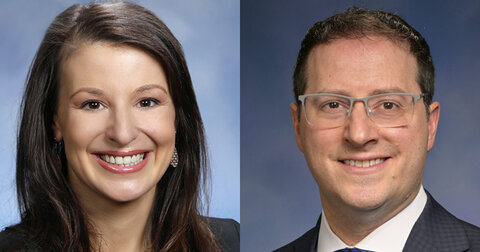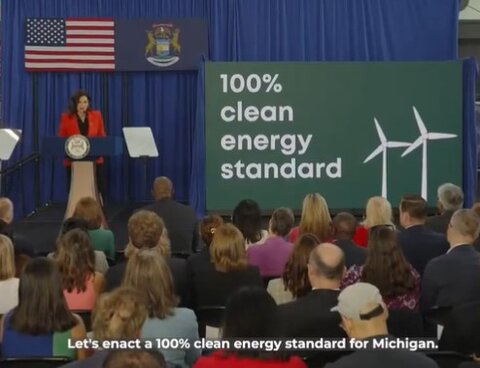Michigan’s nuclear caucus urges reliable energy transition
Roughly 20% of Michigan lawmakers are making the case for nuclear energy to their colleagues
A group of about 30 Michigan lawmakers are urging their colleagues to embrace nuclear energy as the state moves away from fossil fuels, Michigan Capitol Confidential has learned.
The nuclear caucus is a bipartisan, bicameral effort, said Rep. Samantha Steckloff, D-Farmington Hills, a co-chair.
“Nuclear will be part of what we do in Michigan,” Steckloff told CapCon.
“Energy is a nonpartisan, bipartisan concept, but that’s not been followed,” said Rep. Graham Filler, R-St. Johns, who co-chairs the nuclear caucus with Steckloff.
Steckloff sees opposition to nuclear as generational, not partisan. Colleagues who remember emergencies like Three Mile Island and disasters like Chernobyl are hesitant to embrace nuclear. So members of the nuclear caucus work to explain the benefits, trying to move nuclear into the Overton Window of Michigan’s energy transition.
So far, they’ve got the attention of about one fifth of Michigan’s lawmakers.
When Steckloff was asked what powers her colleagues’ fixation on wind and solar and their relative disinterest in nuclear, Steckloff said, “I don’t know.”
Filler, however, does see some politics at play.
“People who back the Dems are funded by wind and solar,” Filler added.“And philosophically, they believe in it. They live in an unrealistic world, but we have to deal with it.”
When Gov. Gretchen Whitmer gave her “What’s next?” speech recently, she touted a 100% clean energy standard for Michigan. But the marketing used wind turbines. And she never mentioned nuclear.
Filler believes the case for nuclear will win the day, once people know more about it.
Last year, Filler championed House Bill 6019, ordering a statewide nuclear feasibility study. That effort was successful, and became Public Act 218 of 2022. The law requires the Michigan Public Service Commission, the state’s energy regulator, to hire an outside consulting firm for $250,000, and to publish its findings in 18 months.
“The use of solar, wind, biomass, and other green technologies are beginning to slow[ly] have an impact on slowing the emissions of greenhouse gases,” read the House Fiscal Agency analysis of Public Act 2018. “However, some feel that these sources are not always sufficient to meet demand, especially in geographic areas where weather patterns mean that the electricity that can be produced on a daily or hourly basis does not always match the needs of consumers who rely on that electricity.”
Enter the nuclear option. Filler sees it as the best of both worlds: reliable and carbon-free. On the downside, it is expensive, and the regulatory process is brutal. Any nuclear development will take many years to get up.
“This is something that may not get done in the 2030s,” Steckloff said of bringing new nuclear resources online.
But fellow lawmakers and the governor are pushing for a “100% clean energy plan” this fall. But plans change.
Last week, Sen. Erika Geiss, D-Taylor, announced intentions to move the target date to 2040, rather than 2035 as Senate Bill 271 is now written. At a Senate Energy Committee hearing, Senate Bill 271 was on the agenda. But there was no testimony, because new language is coming, Bridge Michigan reports.
The preliminary nuclear feasibility report is expected late this year, and the final report will be published in the spring. Filler hopes the report will answer questions for doubtful colleagues, including cost estimates and financial impact.
“About three or four years ago, people started talking about ‘How can we be clean and also powerful?’” Filler said. “Well, that’s what nuclear is.”
Michigan Capitol Confidential is the news source produced by the Mackinac Center for Public Policy. Michigan Capitol Confidential reports with a free-market news perspective.



 Michigan Legislature avoided corporate handouts in 2025
Michigan Legislature avoided corporate handouts in 2025
 Flint schools get $156M in COVID funds, ask for debt relief
Flint schools get $156M in COVID funds, ask for debt relief
 Michigan Legislature gives $1 million to mystery golf nonprofit
Michigan Legislature gives $1 million to mystery golf nonprofit